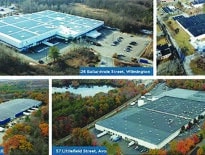
Lew Sichelman
Kevin Casey was “blown away” this summer when nearly 400 people came out to have a peek at two of his firm’s accessory dwelling unit projects.
Now that California Gov. Gavin Newsom has signed new legislation that will make ADUs – a.k.a. granny flats, in-law suites, “casitas” or any number of other monikers – more accessible for Golden Staters, Casey is absolutely ecstatic.
“The state is finally seeing the value of ADUs and we couldn’t be happier,” said Casey, the owner of design-build firm New Avenue Homes, in an email.
New Avenue has built more than 100 ADUs, mostly in Northern California, at prices ranging from $130,000 to $750,000.
“We’ve always been sure of one thing: Accessory dwellings will revolutionize housing,” he said.
What’s an ADU?
For the uninitiated, ADUs are basically small houses or apartments that are built on the same lot as a larger single-family house. They can take the form of individual buildings or converted attics, basements or garages. But in all cases, they are self-contained, independent living spaces.
While they’ve only become prominent over the last few years, they have been with us, in some form or another, for much longer.
Casey pointed out that Arthur Fonzarelli – better known as Fonzie – of “Happy Days” lived above the Cunninghams’ garage. And in “Full House,” Tanner family friend Joey resided in a room in the family’s garage, while brother-in-law Jesse and his bride lived upstairs in an attic studio apartment.
Some firms, New Avenue and Abodu among them, handle the entire permitting process, guarantee a fixed price and can deliver a factory-built unit to a client’s backyard within two weeks
Today, proponents of accessory units believe they will help ease housing shortages by expanding the options for people of all ages. They are aimed at young renters who don’t need a lot of space; moms, dads or other relatives who want to be closer to their loved ones; or caregivers who need to be nearby. And they offer an opportunity for their owners to generate a little side income.
Many communities throughout the country have been relaxing their restrictions against ADUs, and some states have been encouraging their local jurisdictions to allow them.
According to AARP, the cities of Atlanta, Austin, Denver, Houston, Philadelphia, Phoenix and Seattle now allow accessory units. Oregon requires cities and counties of a certain size to allow them in single-family neighborhoods, New Hampshire says they must be allowed in nearly every single-family neighborhood, and Boston-area communities are slicing red tape so units can be built.
California Leads the Way
California is leading the way. In 2017, the state required all cities and counties to allow ADUs as long as the property owner secured a building permit. In September, San Jose named design firm Abodu as its first pre-approved “backyard” homebuilder under its ADU master plan.
“We won’t solve our housing crisis $650,000 at a time,” San Jose Mayor Sam Liccardo said, referring to high-end single-family houses.
Now, Newsom has signed several bills that will make it even easier for property owners to build accessory units. One eliminates occupancy requirements; another makes it easier to add not one, but two ADUs as long as they contain at least 800 square feet of floor space; and a third creates a tiered permit structure based on the size of the unit and its location.
Legislation like this will help boost ADU production in the state, which already has the most in the country. For example, between 2015 and 2018, applications for 8,279 ADU permits were received by the Los Angeles Planning Department alone. The number of permit requests jumped from 282 in 2015 to 3,922 in 2018.
Other California cities have been slower on the uptake, but the number of ADU permit applications is still rising: from none in Long Beach in 2015 to 42 in 2017; from 33 to 247 in Oakland, and from 41 to 595 in San Francisco.
The 2017 law was “a big deal,” Casey told me on the phone. “We’ve been talking about this for decades, but that was the turning point. It’s almost like the whole state got the memo. California has made so much progress.”
Beware Inevitable Hucksters
With progress, though, comes the opportunity for swindlers to enter the market. Consequently, anyone thinking of adding a second dwelling on their property should proceed carefully, warns Casey.
“A couple of hundred startups are all planning to jump on the bandwagon,” he says. “If people aren’t careful, hucksters and amateurs will disappear with their deposits.”
For starters, do your research. Look for an experienced company that knows your city’s rules, as well as the state’s, knows design, and won’t hit you with surprise fees or delays.
Some firms, New Avenue and Abodu among them, handle the entire permitting process, guarantee a fixed price and can deliver a factory-built unit to a client’s backyard within two weeks. A complete 495-square-foot Abodu model starts at $199,000. Another outfit, Modative of Culver City, California, designs, permits and builds its units.
For a good understanding of ADUs, AARP has two great publications: “The ABCs of ADUs” and “Accessory Dwelling Units: A Step-by-Step Guide.” They are free to members at AARP.org/ADU. Also, the July-August 2018 issue of Realtor, the official publication of the National Association of Realtors, has a good piece on ADU basics.
Lew Sichelman has been covering real estate for more than 50 years. He is a regular contributor to numerous shelter magazines and housing and housing-finance industry publications. Readers can contact him at lsichelman@aol.com.






